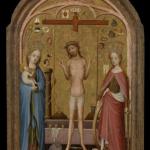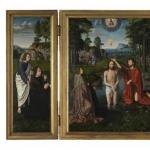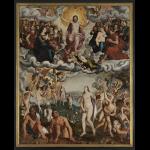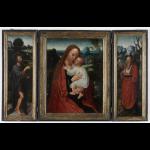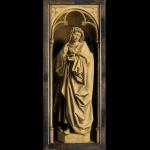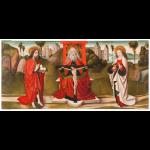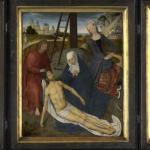This archived website 'Flemish primitives' is temporarily not being updated. Certain functionality (e.g. specific searches in the collection) may no longer be available. News updates about the Flemish primitives will appear on vlaamsekunstcollectie.be. Questions about this website? Please contact us at info@vlaamsekunstcollectie.be.
RELIGION: Saints and the life of saints
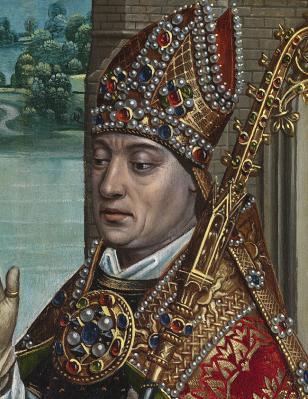
In the Middle Ages, saints make up a a part of the daily life of virtually the entire population, not the least in the cities. Brotherhoods support the city piety and veneration of saints. Hermits prefer an extreme form of separated life after the model of the lives of the saints-whether or not in the city community-, and to the service of the devotion of humanity. In the midst of the economic and religious activity in the wealthy city, artists find an ideal source of income for projects in which the devotional character is paramount. Painters of the saints and the lives of the saints form, along with the numerous reliquaries, the source of inspiration for leading a religiously-inspired life pattern. Tableaux with the Passion of Christ, the life of Mary, the Vera Effigies (the true face of Jesus Christ), saints, the life of a saint, with or without commissioner(s), bring the people who view the works, as well as the patrons, one step closer to heaven. People turn to the saints in prayer. They were venerated as spokesmen of God. They mediate: they protect from danger and sickness. In the arts, the saints were portrayed with an instrument with which they were martyred and/or with a recognisable element from the appropriate life of the saint. The Golden Legend of Jacobus de Voragine (1228-1298), a bundle with descriptions of the lives of the saints, was an important source for artists, both for the visual realisation of the saint or the life of the saint as well as for the study of the iconography.
Sibylla Goegebuer

